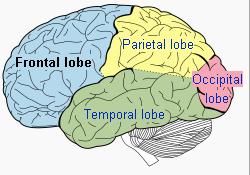A new study conducted at the University of Haifa identified another component in the chain of actions that occur in the nerve cells in the process of creating memories in the brain

A new study conducted at the University of Haifa has identified another component in the chain of actions that occur in the nerve cells in the process of creating memories in the brain. This discovery joins a series of discoveries from previous studies that allow a better understanding of one of the most complex processes in nature - the process in which memories are created and stored in the human brain. The new study was published in the prestigious magazine NEUROSCIENCE THE JOURNAL OF.
The human brain is constantly inundated with sensory information about the world: new sounds, tastes, sights and smells. Little of this sensory information becomes short-term memory. Only a small part of the information that becomes short-term memory eventually becomes stable long-term memory. In previous studies conducted at the Laboratory for Molecular and Cellular Mechanisms of Learning and Memory headed by Prof. Kobi Rosenblum at the University of Haifa, it was found that the formation of a PSD-95 protein is necessary for the creation of long-term memory. In the current study, the researchers wanted to know whether another molecular process - adding a phosphorus molecule to the protein of the NMDA receptor (phosphorylation) to the neurotransmitter glutamate in the brain is also necessary.
It is known from previous studies that changes in the NMDA receptor can change the state of the neural network in the brain and that during learning processes this receptor undergoes an increased process of phosphorylation - attachment of phosphorus groups to the receptor in different areas on the surface of the protein. So far it has not been possible to prove that the increase in the phosphorylation of NMDA is necessary for the process and will not take place without it.
To prove this, the researchers, led by Prof. Rosenblum, head of the Department of Neurobiology at the University of Haifa and Dr. Lisa Berkey Harrington, along with Dr. Alina Alkobi and research student Tali Sabri, chose the processes of creating memories for new tastes in rats as a model for sensory memory. According to the researchers, there is a research advantage in testing taste learning processes because it is possible to accurately track when the learning process began, what is the specific area of the brain where the learning takes place and what are the molecular processes that participate in the process.
In the first stage, the researchers sought to verify the findings of the previous studies and showed that in the process of learning a new taste, an increased phosphorylation process occurs in the NMDA receptors in the specific region of the brain for learning a taste. To this end, adult rats were trained to drink water at a fixed time and after a few days some of them can be given to drink water sweetened with saccharin - a sweetener with no caloric value that does not affect the body metabolically and therefore does not affect processes in the body. As expected, the rats that received a new flavor and began its learning process showed an increased level of phosphorylation compared to those that continued to drink water.
In the second step, the researchers wanted to show that the phosphorylation is necessary. To this end, the researchers injected a new group of rats with a substance that inhibits NMDA phosphorylation in the taste-learning region of the brain when drinking saccharin. In subsequent tests, it became clear that these rats were unable to learn the new taste, which proved the importance of the phosphorylation process for taste learning. The researchers found that preventing the process causes a change in the location of the NMDA receptor and thus probably prevents the formation of long-term memory.
"Our goal is to identify more and more pieces in the complex puzzle of creating long-term memory. As soon as we know how to describe the chain of actions that take place in the brain, we may be able to know where and how to intervene", said Dr. Barki Harrington.
"The neurotransmitters glutamate - through the NMDA receptor - and dopamine play a central role in a number of brain pathologies, including addiction processes and schizophrenia. There is good reason to assume that during schizophrenia there is an under- or over-functioning of this system and its departure from the equilibrium is one of the causes of the disease. A better understanding of the state of equilibrium in normal processes will allow in the future to find new targets for new drugs that we hope will improve the lives of patients to a considerable extent," noted Prof. Rosenblum.

3 תגובות
Nonsense in the juice
Schizophrenia was created because of modernization which created deformed people.
emir:
If you knew this - it's a shame you didn't write an article about it.
As you can see, even the prestigious journal The Journal of Neuroscience didn't know about it.
There is nothing new under the sun
All of this has been known since the beginning of the nineties (at least)